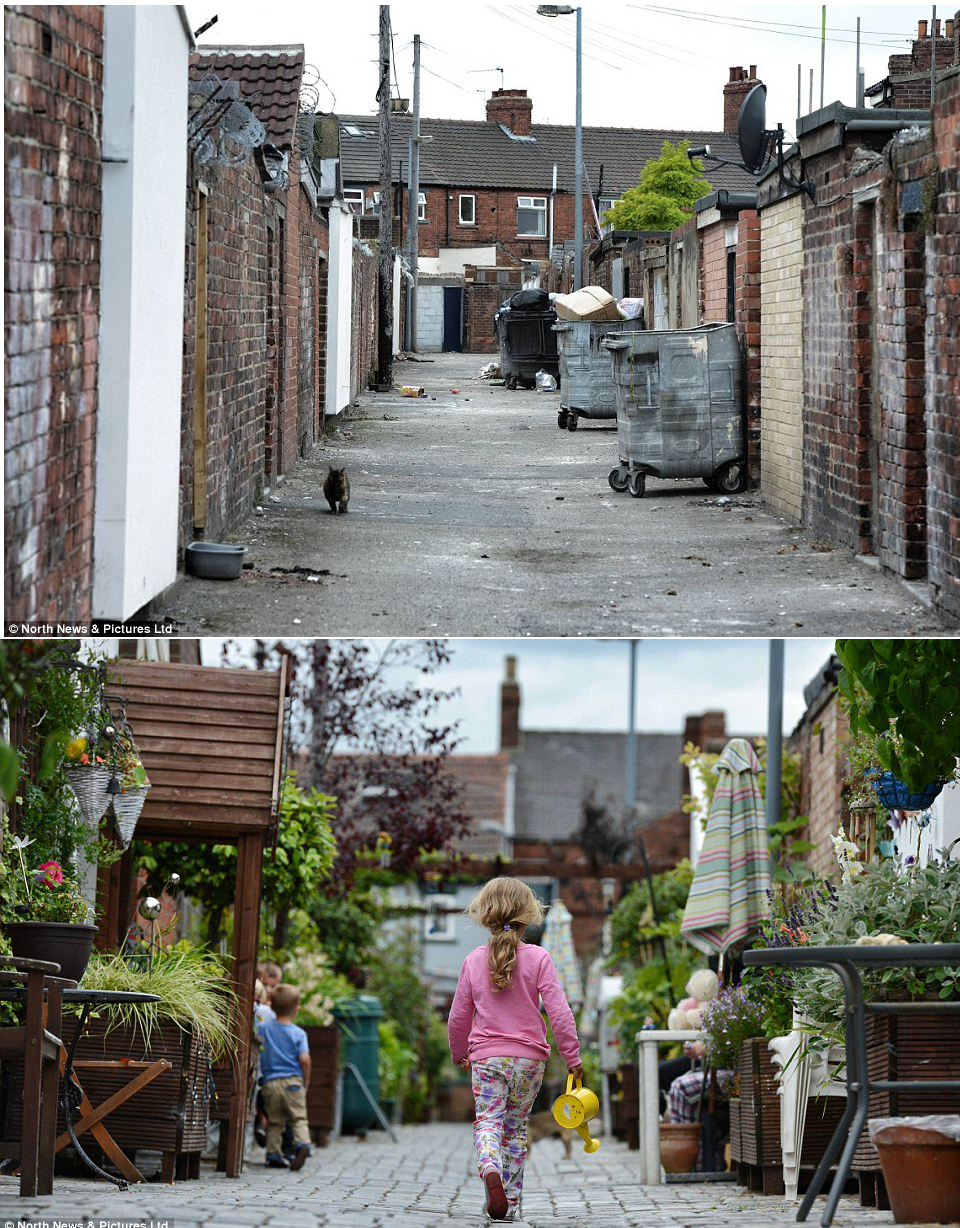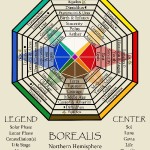A while back, I read this article on a community who came together to green a formerly filthy, crime-ridden alley in an impoverished neighborhood. Funded by a grant, one resident got the ball rolling on transforming the alley into a sustainable garden. This in turn invited other residents to participate, and eight years after the effort was begun the alley is now an urban oasis with loads of food-producing plants and flowers.
The effects have been pretty dramatic. Apart from the physical overhaul of the alley itself, the people living along it now feel more comfortable spending time outdoors among the green, growing things. Being outdoors has a number of psychological health benefits, and given that impoverished places are often disproportionately more likely to be affected by pollution and other environmental ills, it’s heartening to see this blossoming in a poorer area rather than being limited to a wealthy suburb.
Too often environmentalists look at cities as sources of evil. However, with the human population as high as it is, and unless and until we voluntarily lower it through better access to birth control and more education on overpopulation, we need to find greener ways to house and care for the people who are here. There are more people living in cities than in more rural areas, and this is unlikely to change. This is not a bad thing in and of itself. There are some definite environmental benefits to urban living.
For one thing, they take up less space than if all the people in them were living on several acres per family out in the middle of nowhere. My apartment complex takes up less than an acre of land, and yet there are several dozen people living here in a dozen apartments. There could be even more on this one plot of land if the building was more than two stories high. Building up, not out, is key to land preservation as the population remains as high as it is. And the less land we occupy per person, the more land there is for wildlife to roam unfettered.
Plus when we live closer together, with grocery stores and other resources close by, we use fewer fossil fuels to get from place to place. I grew up in a small town with no public transit, and everyone drove everywhere. Sometimes you’d have to drive to the next town over, or the next, to get what you needed. Here in Portland, I can walk to one of three grocery stores (if I want to walk a mile), along with a movie theater, several restaurants, a low-cost medical clinic, and stops for three major bus lines. If I’m not carrying anything heavy (like five bins of artwork and all my gridwall and other display materials, for example) I don’t even need the car my partner and I share.
But this also brings up another issue of inequity. I live in one of the nicer neighborhoods in Portland–nothing really fancy, but certainly not one of the marginalized slum areas. I don’t live in a food desert, and I live down the street from the community garden I have a plot at. I can live green because I am fortunate enough to live in a neighborhood that has the right resources for it, and I have an income that allows me to take advantage of some of these resources.
If we’re going to green the cities, then we need to not just limit it to the “nice” neighborhoods. I benefit from the fact that urban developers and corporations poured money into this neighborhood, but in the process they caused housing costs to rise and drove out poorer people. In the article I linked to above, it took one resident taking the initiative to get a grant and put in countless hours of cleanup to make any change occur. Even today, eight years later, the alleyway is still cared for by residents. And it’s still a poor neighborhood–at least unless gentrification occurs. The efforts to green impoverished neighborhoods are largely left to the residents themselves, and a few nonprofit endeavors.
Part of what frustrates me about the “back to the land” movement is that it can sometimes promote the abandonment of cities–and the people who stay behind in them. Not everyone is willing or, more importantly, able to live rurally. People with some physical disabilities, or who don’t have the money to move to a new place, or who lack the skills and resources to grow their own food, are all just a few examples of those who may be better off in the city. But these are not bad people who want to ruin the earth; they’re just as deserving of the opportunity to live greener and have healthier lives because of it.
And that’s why I love actions like those in the article above. It didn’t take much to completely change an entire small community. The amount of money it would take one family to buy a plot of land big enough to homestead on, plus all the resources and supplies necessary, could revitalize an entire urban neighborhood. And given that it was the efforts of one woman which sparked this change, imagine what a whole family could do–or, for that matter, all the pagans who daydream about going and buying “pagan land”.
Sometimes the solution isn’t to scrap everything and start anew. Perhaps it is more eco-friendly to make changes to the existing infrastructure–to apply reduce, reuse and recycle to our communities as well as our resources. What can you do in your community to green it for everyone?

















